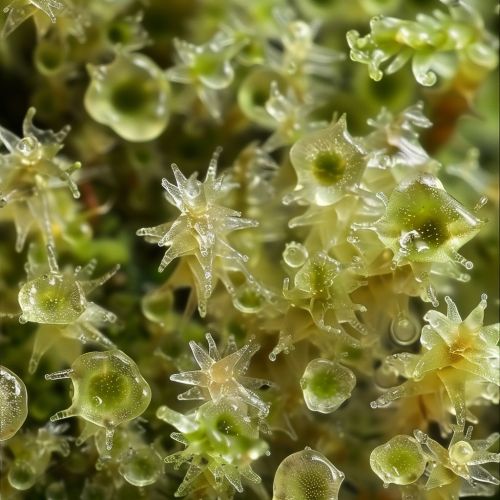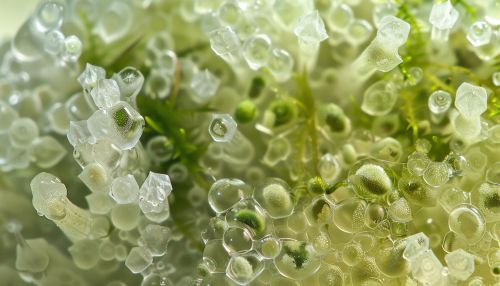Sphagnum
Introduction
Sphagnum is a genus of approximately 380 accepted species of mosses, commonly known as peat moss. Accumulations of Sphagnum can store water, since both living and dead plants can hold large quantities of water inside their cells; plants may hold 16–26 times as much water as their dry weight, depending on the species. The empty cells help retain water in drier conditions.
Classification and Distribution
Sphagnum mosses are found in the Northern Hemisphere in peat bogs, conifer forests, and moist tundra areas. They are also prevalent in the Southern Hemisphere, particularly in Australia, New Zealand, and South America. The highest diversity of Sphagnum species is found in the Northern Hemisphere, with the Holarctic region being particularly rich in species.
Morphology
Sphagnum mosses are small, soft plants that are typically 1–10 cm tall, though some species can grow much larger. They are characterized by their unique structure, which consists of two types of cells: small, living cells (chlorophyllose cells), and large, clear, dead cells (hyaline cells). The chlorophyllose cells are responsible for photosynthesis, while the hyaline cells store water.


Ecology
Sphagnum mosses play a significant role in the formation of peat bogs. They create an acidic environment that slows the decomposition of dead plant material, leading to the accumulation of peat. This process also sequesters a significant amount of carbon, making peat bogs important carbon sinks.
Uses
Sphagnum mosses have a variety of uses. They are commonly used in horticulture, particularly in the cultivation of orchids and other epiphytes. They are also used in the production of peat, which is used as a fuel source in some regions and as a soil conditioner in horticulture. In addition, Sphagnum mosses have been used for centuries as a dressing for wounds, due to their antiseptic properties.
Conservation
Many species of Sphagnum are threatened by habitat loss, particularly due to peat extraction. Conservation efforts are focused on protecting existing peat bogs and restoring degraded ones. This not only helps to preserve the biodiversity of these unique habitats, but also contributes to climate change mitigation by preserving these important carbon sinks.
